Recycling and recovering waste is widely discussed nowadays – there is no question about that. Common materials recovered from domestic and industrial rubbish include plastic, paper, glass, and metals. However, contamination is a major issue when it comes to recycling. Thankfully in October 2020, the campaign “Check it! Before You Chuck It!” clarifies the packaging’s recycling labels. Planet Ark and the Australian Packaging Covenant Organisation (APCO) are the brains behind this campaign, aiming to make recycling easier. The campaign aims to improve recovery rates to reach Australia’s ambitious goal of 80% recovery by 2030 (Department of Environment, 2019) that is pushing for circularity.
Of the 67 million tonnes of waste that are being deposited in Australia, at most, 60% is recycled (Pickin et al., 2018). Part of the reason is due to the confusion surrounding what can and cannot be recycled. In fact, a 2018 Planet Ark survey illustrated that 61% of Australians want more information regarding kerbside recycling (Kwan, 2018).
According to the APCO, a study by Pact Group emphasised that 22% of Australians were unsure of whether an item could be recycled or not. Hence, they were unsure of the recyclability of the item that had been disposed of in their kerbside recycling bin. Additionally, this research found that 81% of Australians were not confident in how to recycle effectively (APCO, 2020).
Where Can I Find The Labels?
Australian-made packaging bags and boxes will generally show the recycling label near the barcode. The icons are consistent throughout the packaging, similar to the image below, which is a simple example of the recycling labels in action on a cereal box.
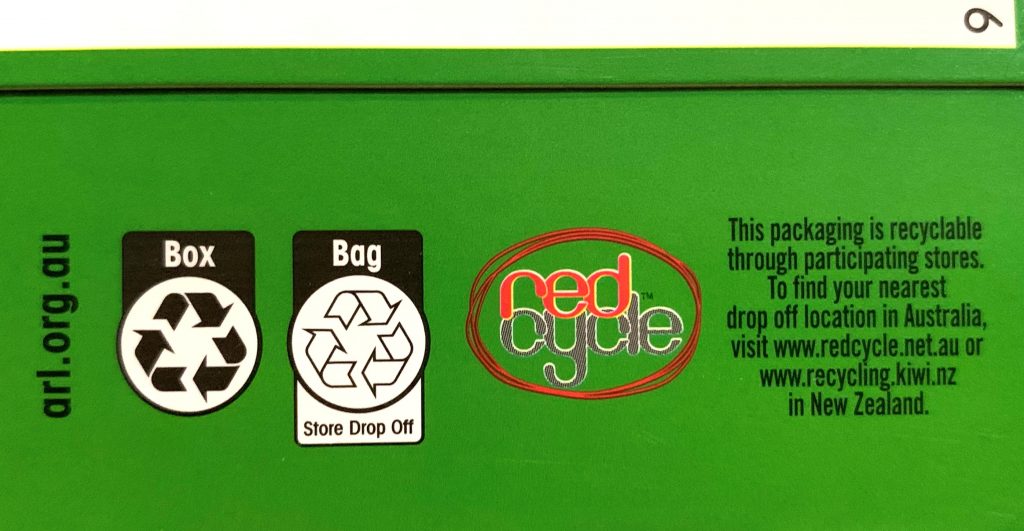
What Do The Icons Mean?
Recyclable
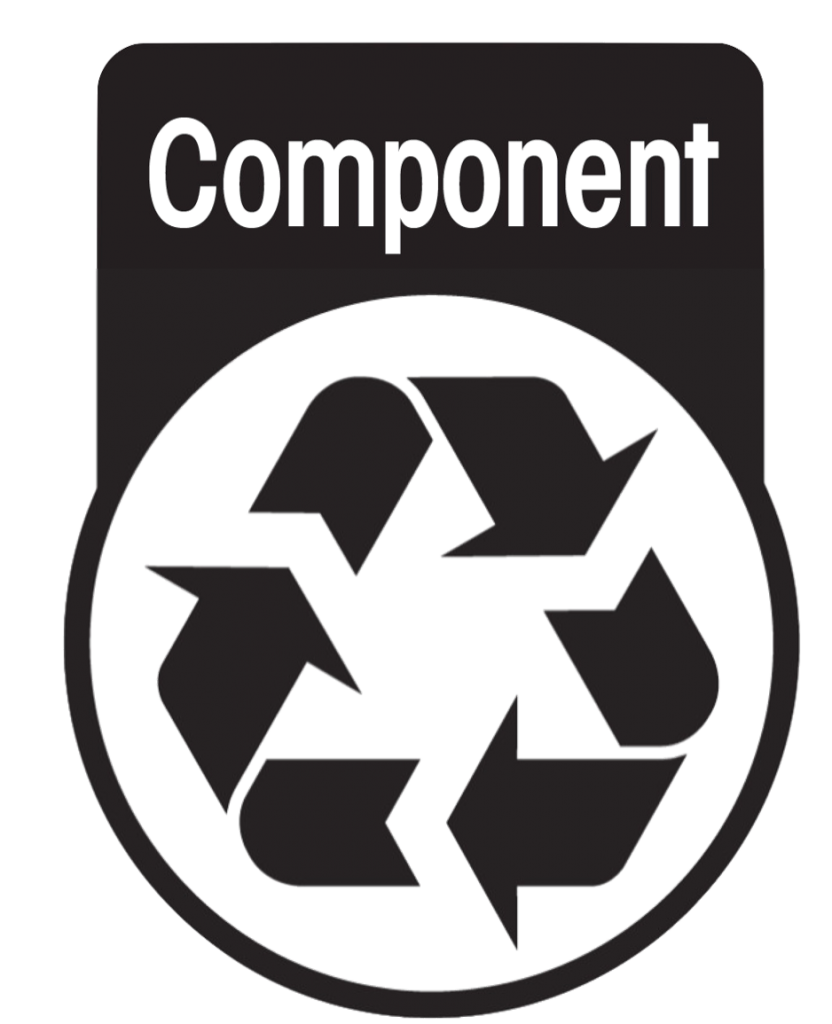
The shaded recycling icon means that the specified component should be placed in the yellow bin. To be recycled successfully, each component piece with this packaging symbol must be separated.
Conditionally Recyclable
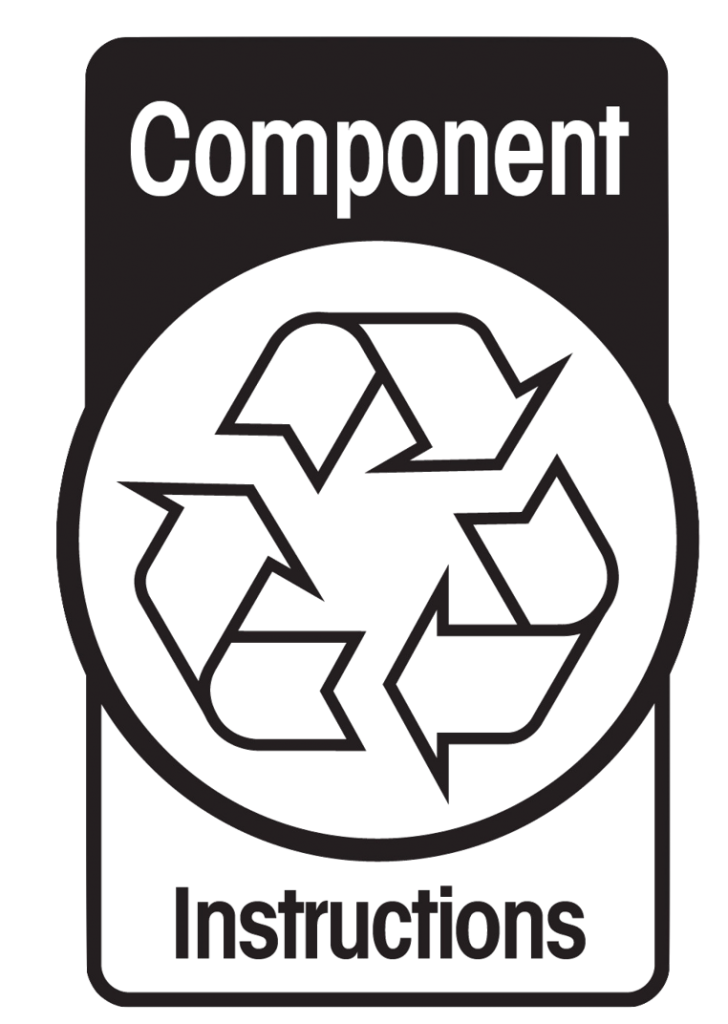
A transparent recycling logo means that the component must be recycled as per the instructions. These instructions can be found on the Australasian Recycling Label website. However, failing to follow these instructions will contaminate the recycling stream, leading the entire stream to the landfills. Hence, it will have to be placed in the rubbish bin if it cannot recycle it correctly.
Not Recyclable
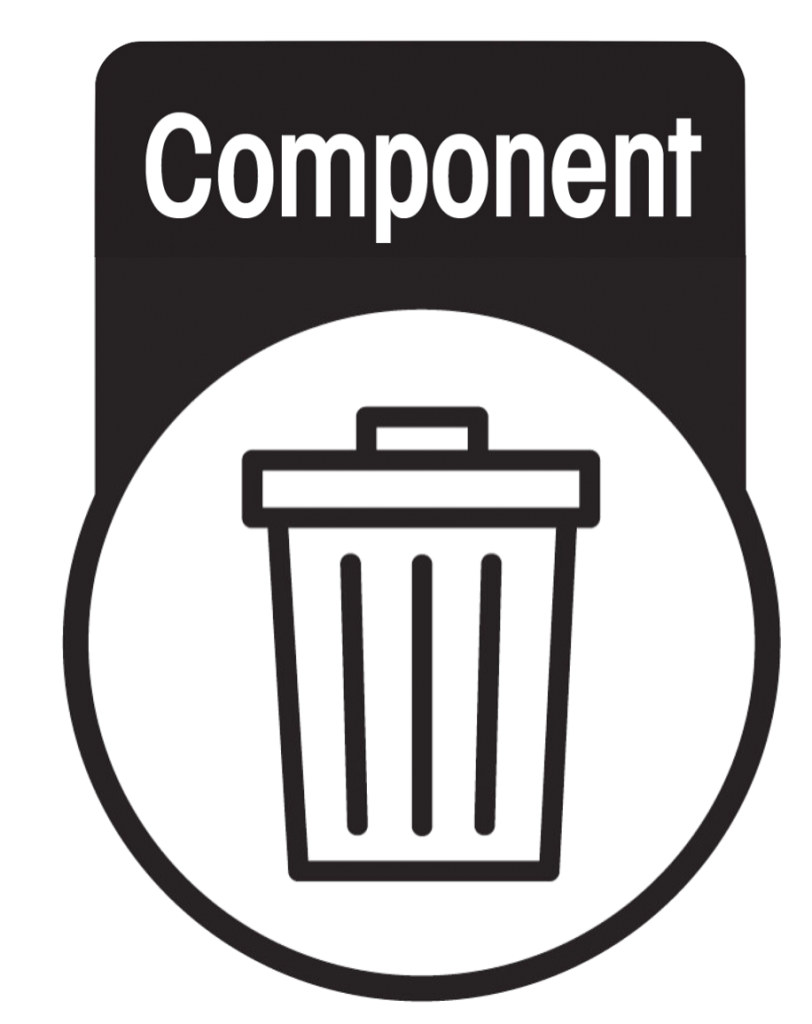
Lastly, the trash can logo represents a component that is not recyclable, which should be placed in the red bin. Similarly, placing this in the recycling bin will contaminate the recycling stream, leading the entire stream to the landfills.
Here’s an example of the labels on a container that require a few separations. Notice that the tin and lid can be recycled with kerbside bins. Next, “return to store” is the instruction for the wrap. Finally, the seal must be thrown away in the rubbish bin.
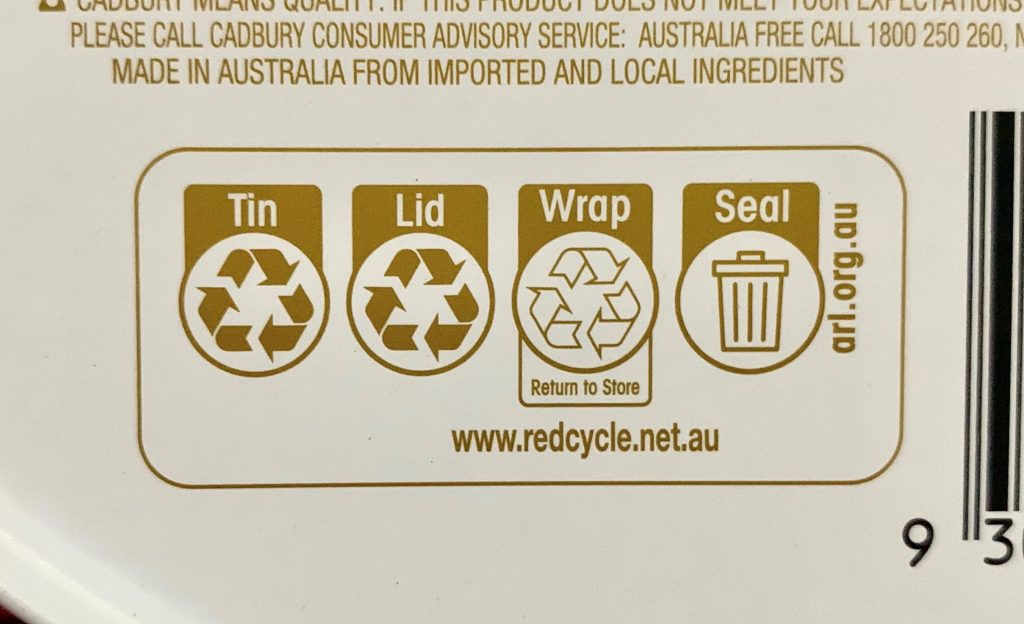
Final Thoughts
In conclusion, these labels make recycling as simple as possible. Creating a sustainable future is still a long road ahead, but there is great positive progress that is being made each year. As always, you must check with your local council for what is acceptable for kerbside recycling. Moreover, we can create a thrivable future if we take more responsibility of our actions.
We can reduce our rubbish in so many ways. First, we can try reducing our plastic waste. Most plastics that is used at home are single-use and have plenty of reusable options on the market. Next, participating with government incentives is a good way to get into the recycling habit. The more you do, the easier it gets! You can read about some of these incentives in the blog here. Lastly, we can try to upcycle/repurpose the material some other way at home, where a quick online search would show you many creative ways and ideas to reduce waste. Doing so forces a positive pressure on the market when we stop buying brand new and spend the extra money on recycled products.
At last, it’s never too late to make a change! You can also get ideas of some sustainable New Year’s Resolutions by checking out our blog here. Finally, consider starting your sustainable journey by joining us at the THRIVE Project – where we can create a THRIVEable planet together.
References
APCO, 2020. New campaign encourages Australians to Check It! Before You Chuck It. [online] Available at: https://apco.associationonline.com.au/news/new-campaign-encourages-australians-to-check-it-before-you-chuck-it
Department of Agriculture, Water and the Environment, 2019. National Waste Policy Action Plan. Available at:
https://www.environment.gov.au/protection/waste-resource-recovery/publications/national-waste-policy-action-plan
Kwan, B. 2018. People who recycle are happier, but many Australians are still confused. [online] Available at: https://www.sbs.com.au/news/people-who-recycle-are-happier-but-many-australians-are-still-confused
Pickin J., Randell P., Trinh J., and Grant B., 2018. National Waste Report, 2018. [online] Available at: http://www.environment.gov.au/system/files/resources/7381c1de-31d0-429b-912c-91a6dbc83af7/files/national-waste-report-2018.pdf
Recycling Near You. 2020. Australasian Recycling Label. Available at: https://recyclingnearyou.com.au/arl/























